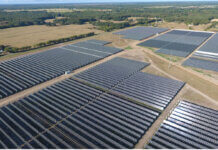Gov. Gavin Newsom, D-Calif., has signed into law a bill designed to help California meet its electric grid reliability and climate change goals by advancing the development and use of so-called “smart appliances” that can shift demand for electricity to when renewable energy production is at its highest, thereby reducing the need for backup fossil fuel plants.
The bill, S.B.49, was introduced by State Sen. Nancy Skinner, D-Berkeley.
“S.B.49 will help bring California’s electrical grid into the 21st century and allow us to use our clean, renewable power more effectively,” says Skinner, who refers to the bill as “Clean Power, Smart Power.”
“S.B.49 will also save ratepayers money,” she adds, “because smart appliances can be programmed to use electricity when it is cheapest.”
Although California has an abundance of power generated from renewable sources, the state faces challenges in meeting its 2030 target of 60% renewable electricity, the senator explains. One problem is that the state’s solar facilities produce electricity during the day, but demand for power peaks in the evening, after people return home from work. During these peak evening hours, California’s grid operators rely on backup fossil fuel plants or storage to meet electricity demand.
S.B.49 is designed to help address this mismatch between electricity demand and renewable power supply by requiring the California Energy Commission (CEC) to foster the development of smart appliances that can shift demand for electricity to when renewable power production is at its peak.
For example, air conditioners can be equipped with technology that allows them to be switched on remotely via a smartphone or other app when solar production is highest, and then switched off when electricity demand peaks. In the case of air conditioners, this allows a home to already be cool before a family returns from work or school, thus reducing both electricity demand and the need for backup power plants.
In addition, S.B.49 is designed to help reduce energy costs for Californians. Currently, electricity costs vary depending on time of day, with higher time-of-use rates for electricity used during hours when demand is at its peak. But under S.B.49, Californians will have access to smart technology that allows them to shift energy use to non-peak demand hours when time of use rates are cheaper.
S.B.49 clarifies that the CEC can consider grid integration – not just energy efficiency – when it sets appliance and building code standards. This allows the CEC to spur the use of smart appliances and establish building code requirements that help to better integrate renewable energy into the grid, says Skinner.
“To meet our grid reliability and climate protection goals, having the ability to direct electricity use to when renewable generation, like solar and wind, is most abundant can be as important as energy efficiency,” Skinner adds. “S.B.49 is just the tool we need to help us get there.”
S.B.49 won bipartisan approval in the state Assembly (60-15) and the Senate on (31-9). It takes effect on Jan. 1.




